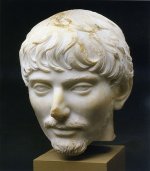LeBrok
Elite member
- Messages
- 10,261
- Reaction score
- 1,617
- Points
- 0
- Location
- Calgary
- Ethnic group
- Citizen of the world
- Y-DNA haplogroup
- R1b Z2109
- mtDNA haplogroup
- H1c
The use of mongol and its adjectival forms is racist as it implies violence while mongols are a minority its use is to classify a large part of the continent as violent. The early racial theorists were racists anyway and to use their language only creates racists thoughts and unnecessary conflict. Their theories led to eugenics and Hitler's killing of "sub-humans" such as Jews, homosexuals, gypsies, Russians and others. Hitler wanted to wipe out the Slavs as he considered them impure and to take over their land for an expanded Germany. Wow, this coming from Hg E Hitler.
Aren't you going too far condemning whole Hg E because of one or few bad apples? By this token we should be able to condemn them all once we have Hg list of all big murderers and psychopathic killers in recent history.



